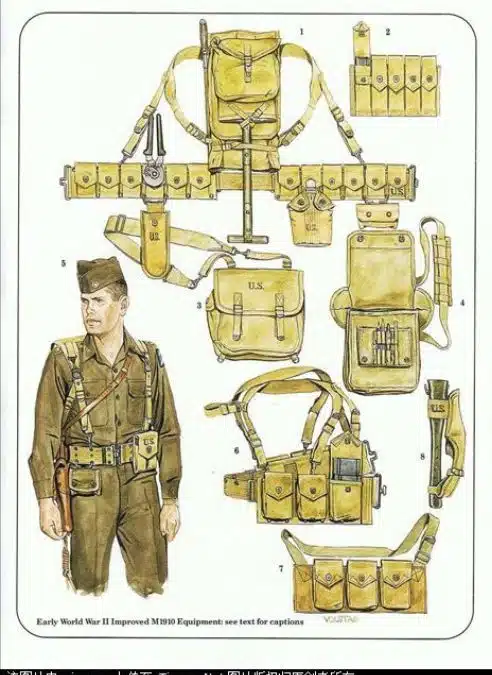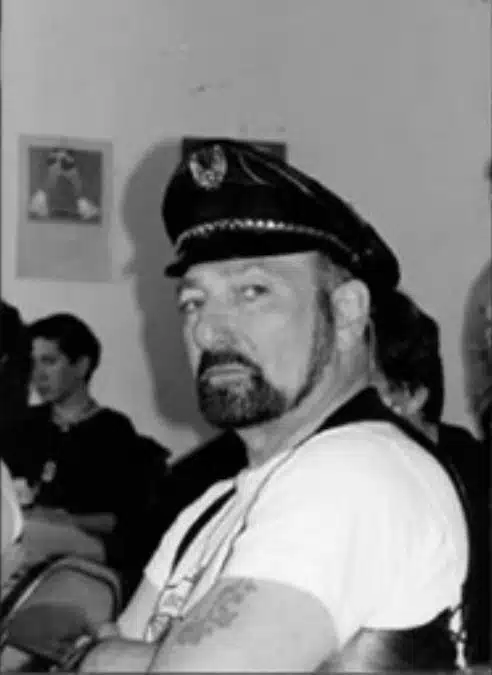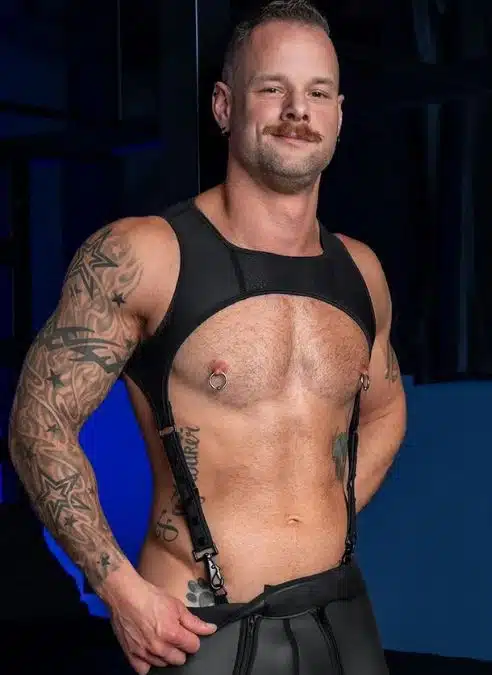
History of the Harness
Picture this: a sultry bar in the 1970s, where sweat and swagger mingle under dim lights. The gay leather harness, that strappy, sexy symbol of rebellion, struts onto the scene, ready to steal hearts and tighten pecs. What is it really for? Well. Gay men realized that if you’re going to Pound Town, a harness offers a body grip for the top to hold onto the bottom from behind, giving physics G-force momentum and letting two become one. But beyond sex, the harness has come to symbolize gay maleness in an iconic armor-like fashion. And now the “straights” are integrating the harness into their fashion!
The Rise of the Leather Harness
Its origins? A bit like a good hookup—shrouded in mystery, but oh-so-tantalizing. Born from the post-World War II leather scene, it drew from military and biker vibes, when returning soldiers traded khakis for black leather, seeking freedom in motorcycle clubs. These bad boys found camaraderie and a chance to flex their masculinity, far from society’s prying eyes.
By the early ’70s, the harness was a staple, popping up in San Francisco’s leather shops and Tom of Finland’s steamy sketches, where it dodged censorship by dressing men as gladiators—because nothing says “history” like a chiseled stud in straps. Think BDSM with a side of camp: the harness hugged muscles, screamed confidence, and whispered, “Pull me closer.” Some say it nodded to Japanese bondage from wartime encounters, adding an exotic twist to its allure.

The Harness Goes Mainstream
From leather bars to circuit parties, it became the ultimate accessory—versatile, like a good wingman, and perfect for flagging kinks with a wink. By the ’80s, icons like Freddie Mercury and Village People’s Glenn Hughes rocked it, making it a mainstream tease. Today, it’s a proud emblem of identity, strutting from Pride parades to red carpets (hello, even Michael B. Jordan!). Sexy, bold, and a little cheeky, the harness remains a timeless flirt in queer culture’s wardrobe.
The 20th century

Let’s now buckle up and take a side-jump to the story of Mr. S Leather—the beating heart (and throbbing other parts) of San Francisco’s leather scene. Founded in 1979 by the dashing Alan Selby (a Yorkshire-born Royal Navy vet turned kink connoisseur) and his lover, the skilled leather craftsman Peter Jacklin, this iconic shop started as a humble outpost on 7th Street in the gritty SoMa (South Market, San Francisco) district. Picture it: post-WWII vibes meet ’70s rebellion, with Selby drawing inspiration from a 1969 SF visit that left him hooked on the city’s raw, revving leather energy. Before crossing the pond, the duo ran Leather Unlimited in London, but SF’s fog and freedom called them to create a space where gear wasn’t just sold—it was celebrated, like a sexy secret society clubhouse.
Mr. S Leather: The Birthplace of Modern Kink Culture
Mr. S quickly became the go-to emporium for all things strappy and snappy, from harnesses that hug like a possessive ex to custom pieces that screamed (or moaned) individuality. We’re talking bulldog harnesses, chest straps, and bondage bliss that helped define the gay leather aesthetic, turning everyday Joes into leather gods. Selby, affectionately dubbed the “Mayor of Folsom Street” and “Daddy of all Daddies,” wasn’t just slinging straps—he mentored newbies in the daddy/boy dynamic, fostering a community where kink met kinship. The shop evolved into an international kink mecca, hosting events and becoming a cultural cornerstone amid SoMa’s transformation from industrial badlands to queer playground.
The Jockstrap’s Golden Era of Desire
Tragedy struck in 1987 when Jacklin succumbed to AIDS, prompting Selby to sell the business and pivot to philanthropy. He raised over $1 million for AIDS causes, volunteered in hospitals, and kept the leather flame alive until his own passing in 2004. Today, Mr. S Leather thrives as a beacon of bold expression, still crafting those irresistible harnesses that make hearts race and brows raise. It’s not just a store—it’s a legacy of lust, leather, and unapologetic fabulousness. If you’re feeling frisky, their current digs at 385 8th Street await your exploration!

The Jockstrap Goes Global: From Fetishwear to Fashion
Pinning down the exact inventor of the men’s leather harness from the 1970s is tricky—it’s like trying to credit one person for the invention of flirting. No single name claims the crown, as the harness evolved organically within the gay leather subculture. Its roots trace back to post-World War II biker and military influences, where leather gear symbolized rebellion and camaraderie among gay men, especially in motorcycle clubs. By the early ’70s, San Francisco’s leather scene, fueled by bars and artisans, turned the harness into a kinky staple. Leather craftsmen like those at shops such as Mr. S Leather or artists inspired by Tom of Finland’s homoerotic illustrations shaped its iconic look—strappy, bold, and unapologetically sexy. While no individual is credited, the harness was a collective creation of a community embracing freedom, desire, and craftsmanship. If you want, I can dig deeper into specific leather shops or figures from the era—let me know!
